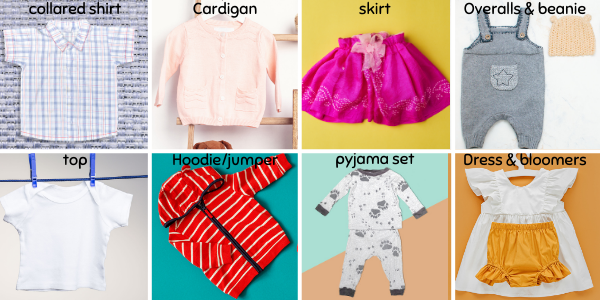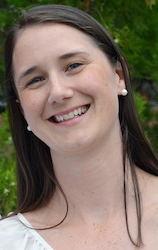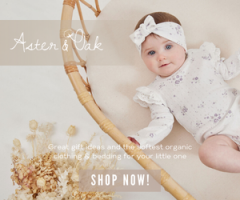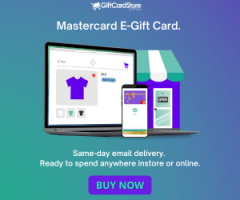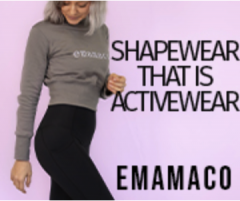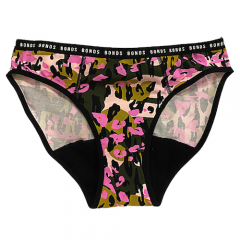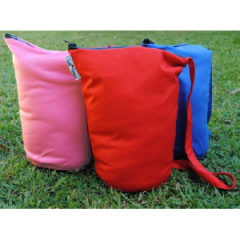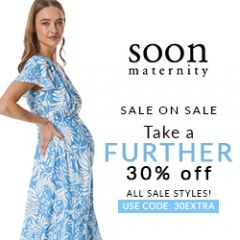Baby Clothes Buying Guide Clothes Suitable for stages: 0 - 3 Months, 3 - 6 Months
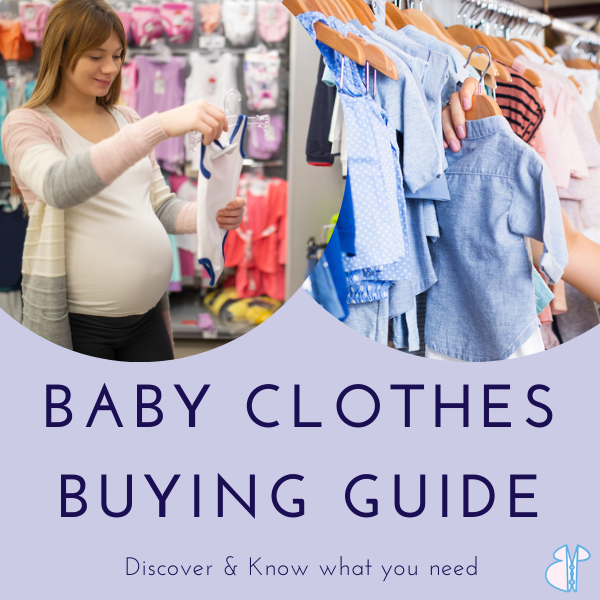

Updated 13 December 2023
One of the big questions new parents have is what baby clothes, what sizes and how many of each do I need?
To start to figure out what clothes you need to have on hand for your baby, it is useful first to understand why babies even need clothes. This might seem obvious, but is worth asking. For newborns, clothes might be used instead of a caregiver's body or in conjunction with a caregiver's body heat to keep them warm. Clothes might protect them from getting dirty, from the sun, cushion their skin from a hard surface or protect their privacy. Clothes can absorb all manner of spit-ups and nappy explosions or leaks which can then take some skill to wash the stains out. Sometimes clothes are just for special occasions and fun to inject colour and cute designs into our lives.
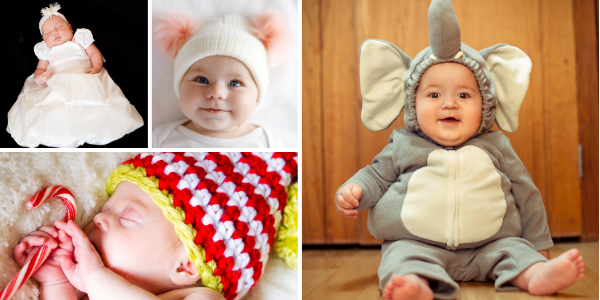
Next, to know what clothes designs are going to be most comfortable and easy to get on and off, it helps to understand a bit about how babies can move and need to move and position their bodies. We cover this information in our related article Dressing Your Newborn which you might want to check out.
Then, to figure out what weight materials and length of clothes to choose, it can be useful to get to know how your baby regulates their temperature and signs that they are too hot or too cool. Your baby's ability to self-regulate temperature is still developing. They can’t shiver, but they can get goosebumps and create heat by using their fat stores to an extent. When they are hot, they can get rosy cheeks and sweat, however, their sweat glands and skin are still underdeveloped. Sweat can easily get trapped in the pores leading to heat rash, especially if the baby is overdressed or over-wrapped.
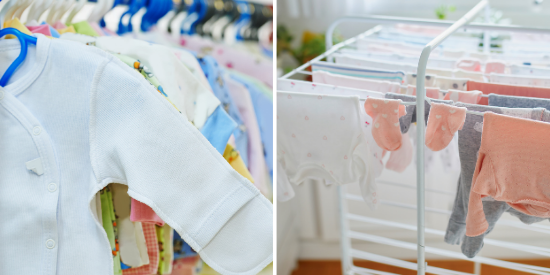
Depending on who you ask, you will get various advice on how many and of what types of clothes you should have ready for when your baby is born.
You never know how big your baby will be at birth, so it is worth having a range of sizes on hand, then you can always buy more as you need them. The advantage of having a stock ahead of time is that you can have the clothes washed and ready to go for when you need them. It is always recommended to wash children's clothes through at least one cycle before the first wear to wash out any chemical residues from the manufacturing process. Over time with use and wash cycles, the clothes will soften. If you have access to hand-me-down clothes, these are a great option both for your baby's comfort and your wallet. If you add the clothes you need and want to your BabyPeg checklist, and then share with friends and family, you never know who might offer clothes second-hand in the sizes and styles you were looking to buy.
Small babies will fit into a 00000, but most average-sized babies will be a 0000 at birth (with some room to grow). Having the clothing a little too big is no big deal, but it's a problem when the clothes are too small. Tight clothing can press and rub on the delicate baby skin causing red marks, can affect blood flow and can restrict their movement. Room to grow is the way to go. If your baby isn't filling out their push-stud crotch onesies, you can extend the length by attaching a bodysuit extension from eBay or Amazon Au.
Size guides
Baby clothes sizes can be confusing at first. That is why we developed the following size guides (see below). These size guides are based on average-sized baby boys and girls and the Australian Standards for clothing sizes. Of course, your baby may be premature or oversized so this is a guide only for helping towards working out what clothes you will need, and in what sizes. There are two charts because boys are on average a bit bigger than girls.
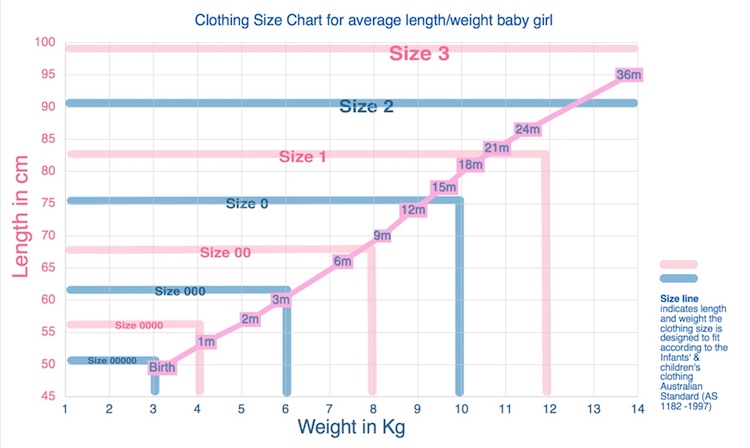
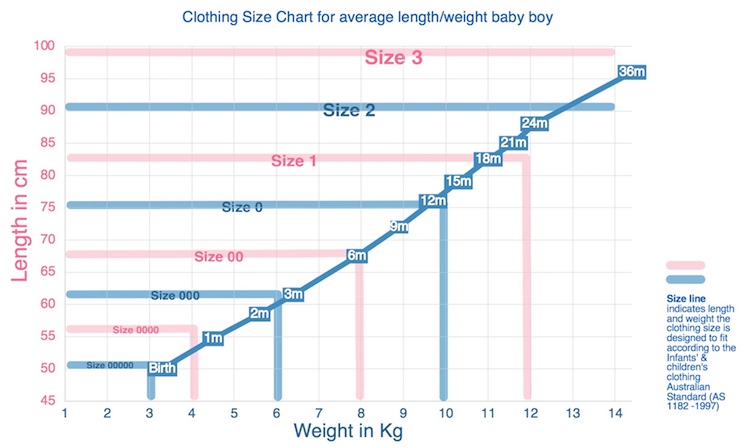
Baby Clothing Types
Here we will explore the different types of baby clothes and what to look for to suit your baby and their stage of development.
Jumpsuits / onesies / bodysuits / romper / singletsuits
The most essential clothes for newborns is definitely the onesie or jumpsuit. These are great to use over the first year of your baby's life as they cover the nappy, keep your baby warm, don't put any pressure on their milk-filled tummies, and their clothing won't ride up or crease. Onesies are cute any time of day and come in any combination of long sleeve (with or without cuff option), short sleeve, sleeveless/singlet cut, long legs with feet enclosed, footless long legs (with or without cuff option), short legs or cover only to the crotch options.
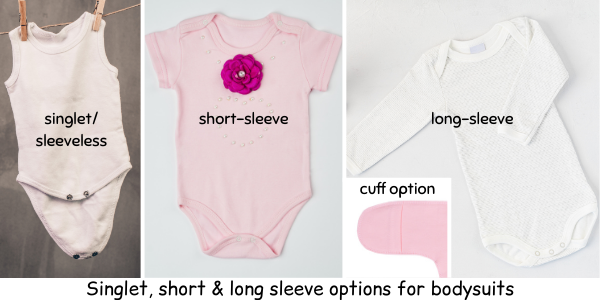
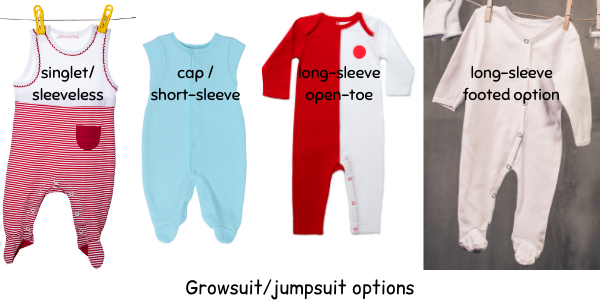
The options you choose will be dependent on the climate where you live including the inside and outside temperatures and also your personal preference. If it is cold, you can layer up by putting a singlet style onesie underneath a long onesie and/or leggings over or under the suit. You can also choose a lightweight fabric or thicker winter weight depending on the season.
Another handy feature that some long-sleeved suits offer is the optional cuff for the hands and/or feet. Cuffs for the hands can be folded over for warmth and to stop your baby from scratching their face (replacing the need for separate mittens). Some long suits have a cuff option for the feet. These are a great option to keep your baby's feet warm without needing to use socks. If it is extra cold, however, you can always put socks over the top of the foot cuff which will help the socks to stay on. The optional cuffs allow you to check your baby's feet, which you can't easily do with a closed footed suit. If you are planning to babywear often, it is recommended to be able to see and feel the feet to monitor temperature and circulation - in that case, an open toe or cuffed suit would be best. Bonds Wondersuits and Cozysuits have both hand and foot cuffs
The enclosed footed designs are great in that you won't need to fiddle around with socks if you live in a cold climate or have a winter baby. The downside is that the built-in foot does limit the life of the garment. It can seem that it will be too large one day (where the feet don't fit in the foot area), then too small the next (where your baby's feet are pushing against the fabric). Since socks are a particular sort of nightmare to keep on baby's feet, if you want to avoid baby socks, you might consider all your options including the closed-toe options (only for non-babywearing times), the cuffed options, having a warm blanket on hand, a sleeping bag (some have a hole so baby can be strapped into the car with the bag on) or footmuff option for your pram/stroller. It's finding the combination which works best for you, your baby and what you need to do.
2 Main Types of Onesies
The onesie comes in 2 main types, closed-body/head-hole opening and front opening, with pros and cons to both.
It is less common, but some onesies have fasteners down the back - for small babies, back fasteners are difficult to access and can bother your baby when lying on their backs. For older babies who are spending more time on their tummies, the fastenings down the back can more comfortable than front fastenings.
Common closed-body/head-hole opening designs
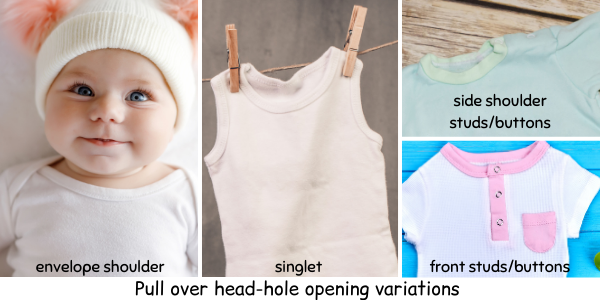
Envelope shoulder:
- Great wide opening for getting the head through
- Fabric can be folded over the shoulder and pulled down the body to remove if the clothing is soiled
- Looser fitting around the neck and shoulders, which can mean it's not as warm as other designs but also won't rub under their chin/neck folds.
- Examples: 4Baby Slogan Long Sleeve Bodysuit, Bilbi Frenchie Bodysuit Sleeveless, Organic Nights Baby Sleepsuits, Kakadu Tiny Tots Jumpsuit
Singlet cut:
- Stretch neck to pull over the head to get on/off (can be difficult)
- Great in hot weather or as a base layer for cold weather
- No fasteners to worry about around the neck/shoulders
- Examples: Bonds Singletsuits, Aster & Oak Singlet Onesie, Fibre For Good Sleeveless Body Suit
Button/stud shoulder:
- Fasteners allow a fitted neckline which can be warmer in cold weather
- When unbuttoned, they are easy to pull over the head
- The position of the buttons are unlikely to bother your baby
- Shoulder fasteners can be fiddly to fasten and undo
- Examples: Purebaby Long Sleeve Veggie Bodysuit - Pistachio, Babyushka Organic Essentials Flower Solid Onesie, Country Road Organically Grown Cotton Tiger Bodysuit - Pale Blue
Button/stud front:
- Fasteners allow a fitted neckline which can be warmer in cold weather
- When unbuttoned, they are easy to pull over the head
- The position of the buttons are unlikely to bother your baby but do add bulk to the front of the clothing
- Fasteners can be fiddly to fasten and undo but are easy to reach
- Examples: Purebaby Rib Henley Bodysuit, Aster & Oak Tuscany Singlet Onesie
Common Front-opening designs
The front opening designs come with various fastening options with the opening running down the midline (over the belly button) or have a cross-over design (kimono style) that layers over the belly and fastens at the side. The main pros to the front opening design is that it's easy to position your baby onto the open garment (no pulling over the head) to then put their arms and legs in, and the fasteners are easy to access when your baby is lying down on their back.
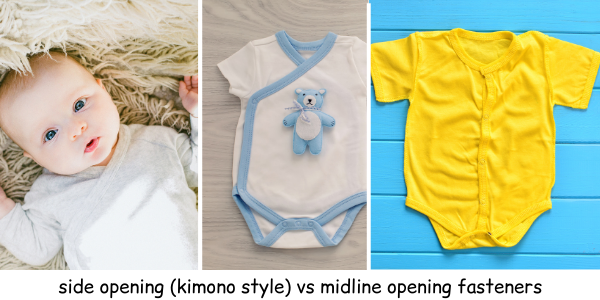
These are the other things to consider about the different designs:
Side opening:
- Double layering over the belly which can be warmer in cold conditions and provides protection for a belly button stump whilst healing
- Requires buttoning on the inner layer, depending on the inner button design and position, the fastening could rub on or bother your baby
- Buttons/fasteners can be fiddly
- Examples: Kimono style rompers & One-piece baby clothes (Amazon), Kimono Style Baby Clothes (Baby Bunting eBay Store)
Midline opening:
- Fastens down the midline over the chest and belly button - making it easy to reach the buttons for the parent to fasten
- The position of the fasteners may bother babies with healing belly button stumps and when doing tummy time
- Buttons/fasteners can be fiddly and this design requires the most studs/buttons of all the designs
- zipper options are available for quicker dressing/undressing, however zippers can be stiff and bulge if the sizing is too long.
- Examples: Rompers (Baby Bunting eBay Store), Purebaby Growsuits (Biome Stores), Bonds Wondersuits (Amazon.com.au)
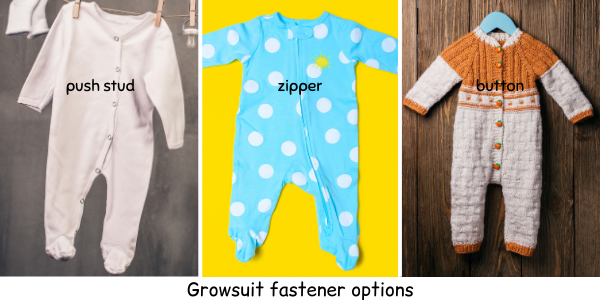
Where to shop:
Aster & Oak - shop all Onesies and Bodysuits & Rompers & All-in-ones & Playsuits & Overalls & Zip Rompers
Baby Bunting eBay Store - shop one-pieces
Biome Eco Stores - organic cotton baby & kids clothes - brands include Organic Nights, Purebaby, Aster & Oak, Fibre For Good, & Kakadu Tiny Tots
Amazon.com.au - Shop Baby Rompers & One-pieces
Bottoms (shorts, bloomers, leggings, tights)
It's handy to have some bottoms options in your baby's wardrobe, particularly for the cooler months. You'll probably find that most of the time, your baby will be in bodysuits and onesies, but occasionally you will want to layer with tights, shorts, bloomers or long pants. For little babies, the waistband can put pressure on their milk tummies and belly button stump, so bottoms are best to get in the 000 sizes onwards when your baby becomes more mobile.
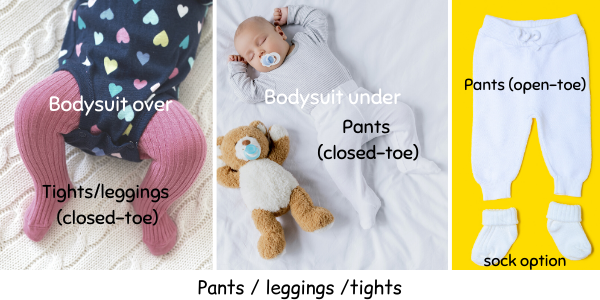
Consider the following before you buy:
- Bloomers can be cute to cover the nappy under a dress but aren't essential.
- Shorts are handy on a hot day to layer over a short onesie.
- Bodysuits can be worn over the top of tights/leggings or under.
- As discussed in the 'footed vs open toe' section above, consider if you want closed-toe or open-toe pants.
- Look for pants with adjustable waistbands either with an inner elastic button adjustment or an elastic waistband with a drawcord - these will last much longer and be truer to size than those without adjustment or the ability to tighten with a drawcord.
Baby Bunting eBay Store - bottoms & Socks & Tights
Biome Eco Stores - bloomer, Purebaby Legging, & shorts
Amazon.com.au - Baby Clothing - Bottoms & Socks & Tights
Other types of baby clothes
There are many other types of baby clothes you can buy. These clothes are great for your older baby once they are starting to sit up and spend more time playing on the floor. Some clothes are best for special occasions (such as formal wear) as they don't hold up to multiple washes, and aren't as comfortable, are harder to get on/off and some restrict free movement. It can be useful to have an option for swimming which can be a swim nappy or a full rashie set
Overalls:
Overalls look extremely cute on babies and young children. They can come in legless/crotch only, shorts or long leg varieties. Usually, you would have a top or singlet suit as a base layer which helps to keep the overall shoulder straps in place and keeps your baby warm. The button fasteners on overalls can be fiddly and the shoulder straps can be hard to keep over the shoulder if the design doesn't cross over at the back or have some adjustment and or stretch to it. For easy nappy changes, look for styles with snaps on the inner leg/crotch.
Examples:
Aster & Oak Playsuits and Overalls
Dresses
Dresses can look very cute, and luckily there are many different colours, designs and styles to choose from (not just pink). For little babies, dresses can be fun to put on for a special occasion or to go out of the house. When your baby is starting to sit up and crawl, the dress can get in the way of their leg movement and them seeing their legs. Skirts are much the same in this respect. During these times, try to go with clothes that don't restrict any movement or hinder their body awareness. Some offer a romper design where they have a button up crotch to keep them in place and cover the nappy, or you can pair them with leggings or tights in colder weather. Dresses can be long-sleeved, short-sleeved or sleeveless. In winter, you could layer a long sleeve onesie or shirt under the dress as well.
Aster & Oak - Girls Organic Dresses
Amazon.com.au - Baby Girl's dresses
Tops
Tops with different colours and designs can be cute to see on your baby. When they are little and before they have a lot of movement skills, a short sleeve onesie does a better job at staying in place. Tops have a tendency to ride up when your baby is wriggling around on their backs and when you pick them up and carry them. Tops can work well when layered over a singlet onesie as the base layer helps the top stay in place. Once your baby is more mobile and spending more time in upright positions, from around 6 months, having a selection of tops for daytime use will come in handy. These will certainly work hard at collecting dribble and all manner of spills so will need to be easy to wash and dry.
Tops come with different necklines including envelope (to take off over the hips if needed), button/stud shoulder, stretch neckline, collared/button-front and kimono-style. Choose designs that are easy to pull on/off, easy to wash and dry and will hold up to many wash cycles. Tops with printed designs generally don't go well after a lot of washes and won't go well in the dryer.
Aster & Oak - Baby Tops & T-shirts
Biome Eco Stores - Aster & Oak, Purebaby & Fibre For Good Tees
Amazon.com.au - Baby Clothing - Tops
Outerwear/jumpers
Jumpers, hoodies and cardigans can be handy for the older, mobile baby when out and about. For young babies, there are plenty of other ways to keep them warm, they can be hard to get on and off, and they will grow out of this type of clothing very fast after very little use. Depending on where you live, you may only need 1 or 2 jumpers for the winter season and it may even be best to wait until you need it before buying to make sure you get the right size and warmth for what you need. Some second-hand items will have had very little use, for this reason, so you may never have to buy a jumper new.
Alternatives to bulky jumpers or jackets for younger babies include using a blanket, wrap, sleeping bag or a babywearing coat.
Amazon.com.au - Baby Coats & Jackets & Hoodies & Activewear
Aster & Oak - Beautifully sweet baby jumpers & baby cardigans
Mittens
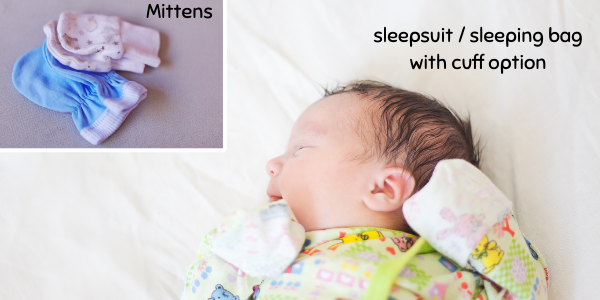
Mittens are a popular choice for newborns to keep their hands warm and also stop them from scratching their face with their fine sharp nails by accident. Babies often hold their hands near their face when they are resting (if their hands aren't enclosed in a swaddle/wrap). It is important to keep their nails well-trimmed but it is difficult since their nails grow fast. Cuffs built into the sleeves of grow or sleep-suits are a great feature to look for or you can buy mittens separately. You can find Mittens at Amazon.com.au, the Baby Bunting eBay Store & eBay
Socks & Shoes
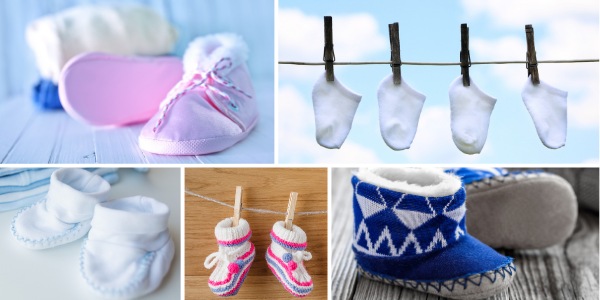
You may need some socks if you are in a cooler climate and your baby is due in the cooler months. You can always warm your baby's feet with a blanket or your hands (when carrying) if you don't want to put socks on them. It can be hard to resist buying newborn socks since they are so adorable! Just be aware that not all socks are created equal. Make sure they aren't too tight around their ankles that they would leave a mark, on the other hand, if they are too loose, they will easily come off and you can have a chronic missing/odd sock problem on your hands. If you are having trouble keeping socks on your baby, you can try sock ons, which fit over the socks to help keep them on. If you are going to be carrying your baby a lot, it is helpful to see their feet to check that that there are no circulation problems. In that case, either have them sockless or remove their socks or foot cuff every now and then to check the skin colour and temperature.
Once your baby is starting to pull up to stand, wearing socks can cause them to lose grip and slip around unless they have non-slip grips.
Baby shoes are just as adorable as newborn socks which is why you might buy them. They aren't really needed until your baby starts to walk, but if you do want to buy some shoes, look for pre-walker types which have a soft sole, are lightweight, have plenty of toe space and can be fastened with elastic or a simple fastener. Other than aesthetics, you could put shoes on your young baby to help keep socks on, but shoes should not be too tight.
Amazon.com.au - shop baby socks & baby shoes 0-6 months, 6-12 months & 12-18 months
eBay - Baby Shoes & Socks & Tights
Ipanema - Baby & Kids shoes - check out the kids & Baby size chart to find out what size you'll need
We hope you can find the perfect wardrobe for your baby through each stage which gives them comfort, warmth, style and free movement to be themselves.
Still not sure where to start? If you want to know what everyone else is buying, this will link you with the Amazon Au bestsellers in baby clothing If you want to shop quality organic clothing, check out Aster & Oak.
Happy shopping!
Written by Anna Noud
Anna is a mother of 2 boys and an Occupational Therapist, holding a Bachelor of Occupational Therapy with Honours from the University of Newcastle, NSW, Australia. A lifelong learner with a passion for everything health-related and a drive to improve the lives of Mothers and the babies who will be the leaders of our future. The most important assets we have in this life is our health, well-being, and happiness. Writing for BabyPeg is a passion project alongside life tripping in the caravan, parenting, and working as an OT to help people with disabilities fulfill their potential. Find me on LinkedIn or message me through the BabyPeg Facebook page.
Please note: Above all, any information on this website aims to provide general ideas for informational and educational purposes only. We encourage users to investigate several information sources, including, where necessary, independent individualised medical advice before making any decisions that could affect you or your child’s health or wellbeing.
BabyPeg participates in various affiliate programs and may earn a commission for referring our users through the links provided. This is at no additional cost to our users. We take great care in choosing products and services that align with the mission of promoting better health and wellness for our BabyPeg community. Where possible, products are tried and tested by us. To continue to provide BabyPeg as a free service and reach as many parents as possible, we appreciate your support in using the link provided to purchase if you decide the product is right for you.
